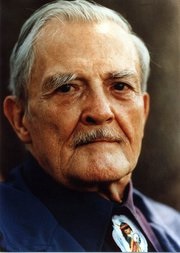The Seminars of Milton H. Erickson: No. 1 Presentation to the San Diego Society of Clinical Hypnosis
- Average Rating:
- Not yet rated
- Topic Areas:
- Hypnosis | Milton Erickson
- Author:
- Milton H. Erickson MD
- Copyright:
-
2000
- Publisher:
- The Milton H. Erickson Foundation Press
- ISBN10:
- 0971619026
- ISBN13:
- 978-0971619029
- Number of Pages:
- 90
- License:
- Never Expires.
Tags: Hypnosis
Description
The Milton H. Erickson Foundation is pleased to announce the release of The Seminars of Milton H. Erickson. Culled from the Foundation’s private archives, these volumes offer access to never-before published transcripts.
Each edition is designed to highlight new dimensions of Erickson’s thinking and practice, laying the groundwork for a scholarly understanding of modern hypnosis, hypnotherapy, and strategic approaches.
The Presentation to the San Diego Society of Clinical Hypnosis, April 29, 1962 , is the first offering in the series. This seminar describes essential differences between traditional hypnosis and the more versatile practice of modern hypnosis. Information is presented on specific clinical problems, including sexual dysfunction, pain management, psychosomatic problems, and parent-child issues. The contents of this lecture are divided into five chapters:
That Which Occurs Within
The Inward Orientation
Frigidity and Impotence
The Individual Approach
Common Sense Suggestion
Credits
Author

Milton H. Erickson MD Related Seminars and Products
Milton H. Erickson, MD, was an American psychiatrist who specialized in medical hypnosis and family therapy. He was founding president of the American Society for Clinical Hypnosis and noted for his approach to the unconscious mind as creative and solution-generating.
Dr. Erickson was plagued with enormous physical handicaps for most of his life. At age 17, he contracted polio and was so severely paralyzed that doctors believed he would die. While recovering in bed, almost entirely lame and unable to speak, he became strongly aware of the significance of nonverbal communication – body language, tone of voice, and the way that these nonverbal expressions often directly contradicted the verbal ones. He also began to have “body memories” of the muscular activity of his own body. By concentrating on these memories, he slowly began to regain control of parts of his body to the point where he was eventually able to talk and use his arms again. His doctor recommended exercising his upper body only so Milton Erickson planned a 1,000 miles canoe trip to build up the strength to attend college. His adventure was challenging, and although he still did not have full use of his legs at the end, he was able to walk with a cane.
The Ericksonian approach departs from traditional hypnosis in a variety of ways. While the process of hypnosis has customarily been conceptualized as a matter of the therapist issuing standardized instructions to a passive patient, Ericksonian hypnosis stresses the importance of the interactive therapeutic relationship and purposeful engagement of the inner resources and experiential life of the subject. Dr. Erickson revolutionized the practice of hypnotherapy by coalescing numerous original concepts and patterns of communication into the field.
The novel psychotherapeutic strategies which Dr. Erickson employed in his treatment of individuals, couples, and families derived from his hypnotic orientation. Although he was known as the world’s leading hypnotherapist, Dr. Erickson used formal hypnosis in only one-fifth of his cases in clinical practice.
Dr. Erickson effected a fundamental shift in modern psychotherapy. Many elements of the Ericksonian perspective which were once considered extreme are now incorporated into the mainstream of contemporary practice.


